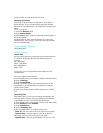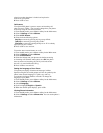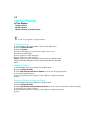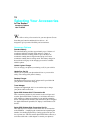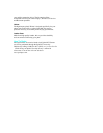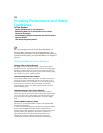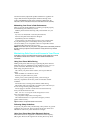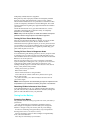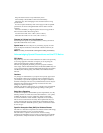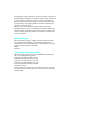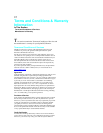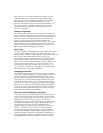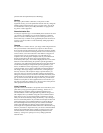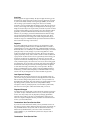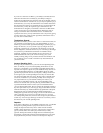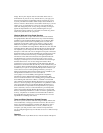. Keep the metal contacts on top of the battery clean.
. Don’t attempt to disassemble or short-circuit the battery.
. The battery may need recharging if it has not been used for a long
period of time.
. It’s best to replace the battery when it no longer provides acceptable
performance. It can be recharged hundreds of times before it needs
replacing.
. Don’t store the battery in high temperature areas for long periods of
time. It’s best to follow these storage rules:
. Less than one month: 4º F to 140º F (-20º C to 60º C)
. More than one month: 4º F to 113º F (-20º C to 45º C)
Disposal of Lithium Ion (LiIon) Batteries
For safe disposal options of your LiIon batteries, contact your nearest
Sprint PCS-authorized service center.
Special note: Be sure to dispose of your battery properly. In some
areas, the disposal of batteries in household or business trash may be
prohibited.
Note: For safety, do not handle a damaged or leaking LiIon battery.
Acknowledging Special Precautions and the FCC Notice
FCC Notice
The phone may cause TV or radio interference if used in close proximity
to receiving equipment. The FCC can require you to stop using the
phone if such interference cannot be eliminated.
Vehicles using liquefied petroleum gas (such as propane or butane)
must comply with the National Fire Protection Standard (NFPA-58). For
a copy of this standard, contact the National Fire Protection Association,
One Batterymarch Park, Quincy, MA 02269, Attn: Publication Sales
Division.
Cautions
Any changes or modifications to your phone not expressly approved in
this document could void your warranty for this equipment and void
your authority to operate this equipment. Only use approved batteries,
antennas and chargers. The use of any unauthorized accessories may be
dangerous and voids the phone warranty if said accessories cause
damage or a defect to the phone.
Although your phone is quite sturdy, it is a complex piece of equipment
and can be broken. Avoid dropping, hitting, bending or sitting on it.
Body-Worn Operation
To maintain compliance with FCC RF exposure requirements, use only
belt-clips, holsters or similar accessories that maintain a 1.5 cm. phone,
including the antenna. The use of belt-clips, holsters and similar
accessories should not contain metallic components in its assembly.
The use of accessories that do not satisfy these requirements may not
comply with FCC RF exposure requirements, and should be avoided.
For more information about RF exposure, please visit the FCC website
at www.fcc.gov.
Specific Absorption Rate (SAR) for Wireless Phones
The SAR is a value that corresponds to the relative amount of RF energy
absorbed in the head of a user of a wireless handset.
The SAR value of a phone is the result of an extensive testing,
measuring and calculation process. It does not represent how much RF
the phone emits. All phone models are tested at their highest value in



